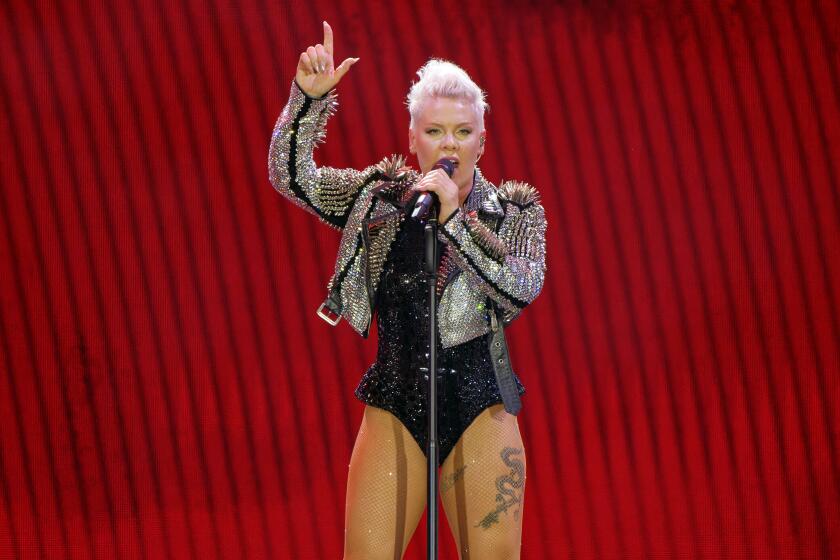Movie review: ‘Crazy Horse’
- Share via
If Frederick Wiseman’s involving new documentary “Crazy Horse” is any indication, that old rule about how you get to Carnegie Hall — “practice, practice, practice” — applies equally well to that Parisian temple of self-described “nude chic” known to its intimates simply as “Le Crazy.”
At age 82, with 37 documentaries to his credit, the endlessly curious Wiseman shows no signs of slowing down. His latest investigations of human institutions — this film, 2010’s “Boxing Gym” and 2009’s “La Danse — Le Ballet De L’Opera De Paris” — have focused on bastions of physicality and movement.
Founded in 1951 by the late Alain Bernardin, the Crazy Horse’s cabaret show is, to borrow a phrase from American history, a most peculiar institution. Yes, it features numerous naked women, but the effect of its upbeat and elaborate Las Vegas-style production numbers is more aesthetic than erotic, kind of like the Cirque du Soleil with nudity.
These tall, thin, totally fit women — each of whom has taken an improbable stage name like Zula, Nooka, Fiamma and Loa — are so much of a single physical type that they tend to look alike as they execute their precise gymnastic moves. A reprise of “This Was Burlesque” Le Crazy definitely is not.
What these women also do is work exceptionally hard. Though Wiseman’s longtime cinematographer John Davey has shot considerable performance footage, what is inevitably of more interest than the actual show are the elaborate, exhausting rehearsals everyone goes through. The construction of artifice turns out to require a great deal of effort.
Led by choreographer and director Philippe Decouflé, these practice sessions are painstakingly detailed affairs, with the dancers walked and talked through precisely choreographed routines with the goal of coming up with a show error-free. Though, as is usual with Wiseman, there is no voice-over and no direct interviews, by the time someone calls these women “soldiers of an erotic army,” we surely know why.
The centerpiece of “Crazy Horse,” however, is not the rehearsals but a meeting that Decouflé has with his collaborators and bosses in anticipation of his revamping of the show into a new revue to be called “Desirs.”
The choreographer is, not to put too fine a point on it, in despair at the prospect of having to come up with a new production without closing the old one (which runs a minimum of two shows a night, seven nights a week), something he is told the shareholders will never agree to.
“We have to face what creation is about,” he says, sounding quintessentially French. “To be the best nude dancing in the world, a break is necessary.” If that doesn’t happen, he warns darkly, it will be almost impossible to get something that will “impress the intellectuals.”
It’s not only the dancers that work hard at le Crazy, it is everyone, and the film supplies glimpses of the show behind the show — the endless parade of ice buckets waiting for bottles of presumably expensive Champagne, the smoothly running system for taking souvenir photographs of the guests — that is geared to maximizing commerce rather than crafting art.
Though Le Crazy understandably considers itself to be a creative show whose mission is “to suggest and seduce through restraint,” what we also see on film is the other side of the coin, a strange kind of industrial endeavor, a factory of desire that is very good at what it does.
Because Wiseman and his team were allowed complete access to the club, shooting some 150 hours of footage, “Crazy Horse” captures wonderful moments, none more charming than one in which a group of performers, many of whom have been to dance conservatories, sit around in bathrobes and laugh as they watch a DVD of celebrated ballet bloopers.
It is a deft revelation of shared humanity, the kind of thing no one does better than Frederick Wiseman.
More to Read
The biggest entertainment stories
Get our big stories about Hollywood, film, television, music, arts, culture and more right in your inbox as soon as they publish.
You may occasionally receive promotional content from the Los Angeles Times.











